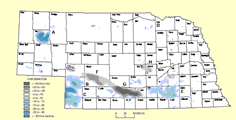Natural Resources, School of
ORCID IDs
Andreas Möller https://orcid.org/0000-0002-3692-1579
James I. Kirkland https://orcid.org/0000-0002-9157-4813
Garrett A. Hatzell https://orcid.org/0000-0003-2743-6149
Date of this Version
2023
Citation
Joeckel, R.M.; Suarez, C.A.; McLean, N.M.; Möller, A.; Ludvigson, G.A.; Suarez, M.B.; Kirkland, J.I.; Andrew, J.; Kiessling, S.; Hatzell, G.A. Berriasian–Valanginian Geochronology and Carbon-Isotope Stratigraphy of the Yellow Cat Member, Cedar Mountain Formation, Eastern Utah, USA. Geosciences 2023, 13, 32. https://doi.org/10.3390/ geosciences13020032
Abstract
The Early Cretaceous Yellow Cat Member of the terrestrial Cedar Mountain Formation in Utah, USA. has been interpreted as a “time-rich” unit because of its dinosaur fossils, prominent paleosols, and the results of preliminary chemostratigraphic and geochronologic studies. Herein, we refine prior interpretations with: (1) a new composite C-isotope chemostratigraphic profile from the well-known Utahraptor Ridge dinosaur site, which exhibits δ13C features tentatively interpreted as the Valanginian double-peak carbon isotope excursion (the so-called “Weissert Event”) and some unnamed Berriasian features; and (2) a new cryptotephra zircon eruption age of 135.10 ± 0.30/0.31/0.34 Ma (2σ) derived from the CA-ID-TIMS U-Pb analyses of zircons from a paleosol cryptotephra. Our interpretations of δ13C features on our chemostratigraphic profile, in the context of our new radiometric age, are compatible with at least one prior age model for the “Weissert Event” and the most recent revision of the Cretaceous time scale. Our results also support the interpretation that the Yellow Cat Member records a significant part of Early Cretaceous time.
Included in
Geology Commons, Geomorphology Commons, Hydrology Commons, Paleontology Commons, Sedimentology Commons, Soil Science Commons, Stratigraphy Commons


Comments
Copyright: © 2023 by the authors. Licensee MDPI, Basel, Switzerland. This article is an open access article distributed under the terms and conditions of the Creative Commons Attribution (CC BY) license